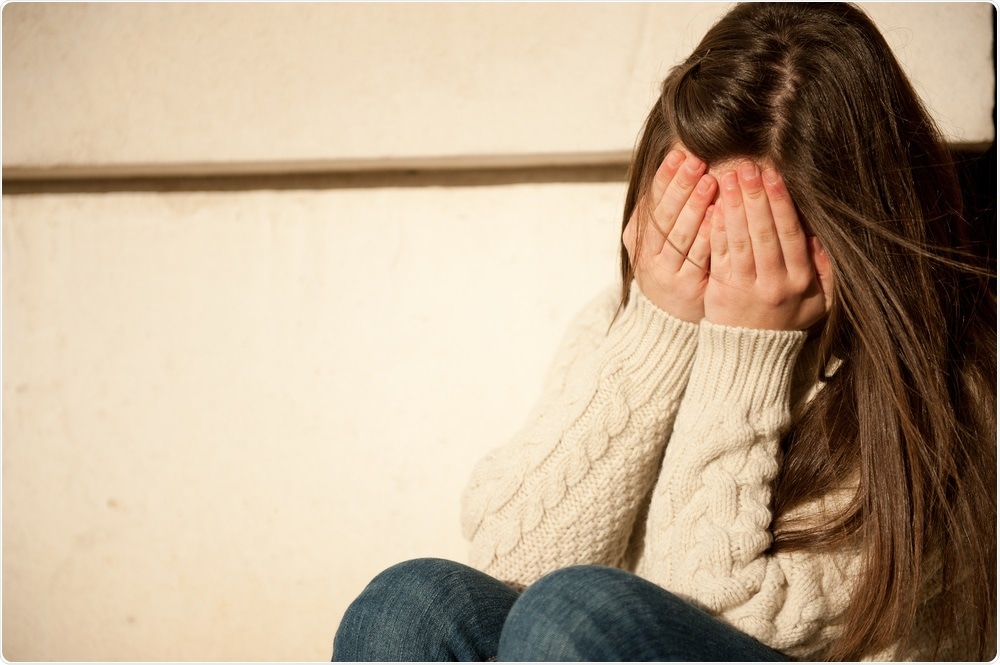
One in 13 children affected by PTSD, according to landmark study
A large UK study has found that almost one in 13 (8%) young adults suffer from PTSD following a childhood trauma, which may be linked to a rise in the diagnosis of mental health disorders in the adult population.
 John Gomez | Shutterstock
John Gomez | ShutterstockAmong those with PTSD, only one in five had ever received any professional help and three out of four of those with PTSD had at least one other mental health condition.
As is evident from Table 1, one in four were functionally impaired (could not pursue education, training or employment). Over half had a history of major depression, while one-fifth attempted suicide by age 18.
Condition/risk event | Percentage in trauma-PTSD | Percentage in overall sample |
|---|---|---|
Major depressive episode | 55 | 17 |
Conduct disorder | 27 | 14 |
Alcohol dependence | 26 | 11 |
Risk events for self-harm | 49 | 10 |
Attempted suicide | 20 | 2 |
Violent offence | 12 | 4 |
Functional impairment | 27 | 10 |
Loneliness or social isolation | 50 | 25 |
Table 1. Percentage of mental health conditions in PTSD related to childhood trauma.
The study was a large epidemiological study including more than 2000 18-year-olds. It was based on families with same-sex twins born in England and Wales during the years 1994-95. This was representative of the population of families with newborns in the UK. These twins were then reassessed for the current study at 18 years.
One in three reported childhood trauma (median age: 15 years), with the most common cause being an event affecting someone close to the participant.
The second most common cause of trauma was personal danger or assault (bullying or adult abuse), and thirdly, illness or accident.
Young people have been shown to suffer the highest rates of trauma. The effects of such trauma on a developing nervous system, as well as emotional and social development, are more serious in this group.
In a few cases, the trauma could not be recalled by the child – such as one young woman who had a serious stomach condition requiring multiple bouts of resuscitation, and major surgery at only four months of age (none of which she remembers). Specialists said her nervous breakdown at age 8 was actually delayed PTSD.
In the study, a diagnosis of PTSD was based on the presence of the following set of symptoms if they persisted for one month or longer:
- Reliving the traumatic episode by repeated memories or nightmares
- Avoidance of any reminder of the trauma
- Emotions of guilt, detachment or isolation
- Impulsive or irritable temperament, or lack of concentration
Those at highest risk for PTSD were those who underwent violence or danger from other people, especially sexual or physical in nature (making up one-fifth of all trauma categories), who accounted for half the cases of PTSD.
Other major risk factors for PTSD following childhood trauma included childhood victimization, being female, a lower IQ, lower socioeconomic strata, and having psychotic symptoms.
Senior researcher Prof Andrea Danese pointed out that while some mental symptoms are “normal” following a trauma, they typically resolve in days or weeks. If they persist beyond a month, professional help must be sought, since PTSD is completely treatable.
The Aftermath of Trauma and PTSD
Compared to the whole sample of over 2000 participants, those with PTSD had an eight-fold higher risk of developing psychotic symptoms and of drug addiction, were six times more vulnerable to major depression, and had five times the risk of generalized anxiety disorder.
They had also a tenfold risk of attempted suicide, an eight-fold risk of self-harm, and were three times more likely to commit violent offenses.
In fact, PTSD was not the commonest illness following a childhood trauma. A quarter of them reported self-harm and one in 12 attempted suicide.
That is, children and young adults exposed to trauma must be screened for complex mental illness.
Observer Tim Dalgleish, of the University of Cambridge, says the study is a landmark in this area, and the results should be a “wake-up call that service provision in the UK for children and adolescents dealing with the aftermath of trauma is woefully inadequate."
In response, the NHS has a long-term plan in place to pour more money into improved mental care for children and young people first of all. This will give access to mental health support at school or college for another 345 000 more patients in this vulnerable group. Young adults will receive support until the age of 25.






















.png)












No hay comentarios:
Publicar un comentario